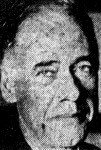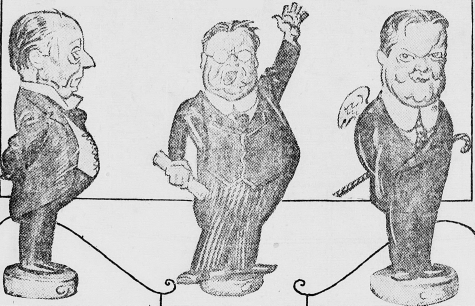 Last week, we looked at the 1921 book Mirrors of Washington in which the anonymous author took 14 D.C. Worthies, including five Senators, to task for various reasons. Today, we’ll look at the reactions to book – and the outing of the author.
Last week, we looked at the 1921 book Mirrors of Washington in which the anonymous author took 14 D.C. Worthies, including five Senators, to task for various reasons. Today, we’ll look at the reactions to book – and the outing of the author.
Reviews of Anonymous’s Mirrors of Washington were generally favorable. Most compared it, unsurprisingly, to another book published the same year on the other side of the Atlantic by an anonymous author: The Mirrors of Downing Street, which took British politicians to task. One critic posited that where the British author – one Edward Harold Begbie – used a rapier, “Anonymous” wielded a saber.
The Washington Herald, which found the portraits “lively and entertaining” nonetheless felt that Anonymous “was just as biased as we are but along slightly different lines.” That it did not, in fact, give an unvarnished portrait of the important and powerful, but rather just another biased account. The Washington Post, for its part ignored it entirely.
The Mirrors of Washington was, of course, a great success. It was listed in the Washington Times as one of the “Books in Demand” in early September, and was the ninth most popular non-fiction book of 1922, according to Publisher’s Weekly. Over the next year, it was used as the basis for a sermon, fodder for various columns, and even produced a sequel, Behind the Mirrors, with the author listed simply as “the Author of The Mirrors of Washington.”
Where Mirrors had looked at individual politicians in D.C., Behind looked at the whole process that defined Washington – and the business of governance in general – at the time. A typical quote was: “Democracy is an artificial edifice imposed upon a society which is in all other than its political aspects entirely primitive.” Further opprobrium was rained upon the business leaders – particularly those who had inherited their position – who treated their employees as their chattel.
Shortly thereafter, it was reported that Anonymous was, in fact, Clinton W. Gilbert. Gilbert, who had spent 20 or so years writing and editing New York papers, had moved to Washington in 1918, as the D.C. Correspondent of the Philadelphia Public Ledger. From this perch he was a familiar face in the Senate press gallery, and had covered the Versailles Peace Conference shortly after moving to the capital. He was thus perfectly poised to capture the true measure of the denizens, workings, and scandals of D.C. The Washington Times reported that “[certain] gentlemen on Capitol Hill are itching for a chance at Clinton Gilbert.”
None, however, went past the “itching” stage, and Gilbert’s outing did nothing to stop his work. He continued to work in the nation’s capital – including a stint writing a column for Colliers under the ungainly byline ‘The Gentleman at the Keyhole” – until his early death in 1933. He left as his legacy the enormous number of books that have followed in his footsteps, books that seek to expose the inner machinations of government, elucidate the quirks of the powerful, and trumpet the scandals of them all.
If you’re interested in reading the two book, they can be find at archive.org: The Mirrors of Washington and Behind the Mirrors.

